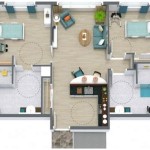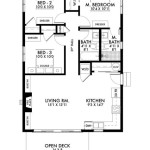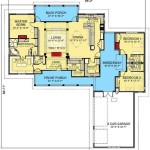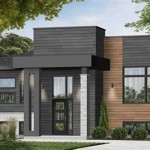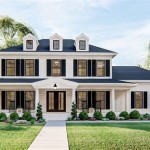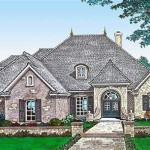House plans are blueprints that outline the design and layout of a residential dwelling. They provide a detailed representation of the structure’s dimensions, space allocation, and material specifications. Architects, designers, and contractors use house plans to create homes that meet specific functional and aesthetic requirements.
Types of house plans vary widely depending on factors such as the number of bedrooms and bathrooms, the presence of special features like garages or pools, and the architectural style. For instance, a ranch-style house plan typically features a single-story design with a sprawling layout, while a Victorian-style house plan may include multiple stories, intricate detailing, and bay windows.
Understanding the different types of house plans is crucial for homeowners and builders alike. By exploring the available options, individuals can make informed decisions about the design and functionality of their future homes.
Here are eight important points about types of house plans:
- Single-story vs. multi-story
- Number of bedrooms and bathrooms
- Presence of special features
- Architectural style
- Size and layout
- Energy efficiency
- Cost to build
- Resale value
These factors can significantly impact the design, functionality, and overall appeal of a home.
Single-story vs. multi-story
One of the primary distinctions in house plans is the number of stories. Single-story homes feature all living spaces on a single level, while multi-story homes have multiple levels, typically connected by stairs.
Single-story homes offer several advantages. They are generally easier to navigate, especially for individuals with mobility issues. All rooms are easily accessible without the need to climb stairs. Additionally, single-story homes tend to be more energy-efficient as heat can more easily circulate throughout the home without the obstruction of multiple stories.
Multi-story homes, on the other hand, can provide more privacy and separation between different living areas. Bedrooms and bathrooms can be located on separate floors, creating dedicated spaces for rest and relaxation. Multi-story homes also offer the potential for additional living space, such as a bonus room or home office, which can be accommodated on upper levels.
Ultimately, the choice between a single-story and multi-story home depends on individual preferences, lifestyle, and budget. Single-story homes may be more suitable for those seeking ease of accessibility and energy efficiency, while multi-story homes offer more space and privacy.
Number of bedrooms and bathrooms
The number of bedrooms and bathrooms in a house plan is a crucial factor to consider, as it directly impacts the functionality and comfort of the home.
- Single bedroom, single bathroom:
This type of plan is suitable for individuals, couples, or small families who require a basic living space. It typically includes one bedroom, one bathroom, and a combined living and dining area. Single bedroom, single bathroom plans are often found in apartments, condos, and starter homes.
- Two bedrooms, one bathroom:
This plan offers a bit more space and privacy compared to the previous one. It includes two bedrooms, one bathroom, and a dedicated living and dining area. Two bedrooms, one bathroom plans are commonly found in townhouses, small houses, and apartments.
- Three bedrooms, two bathrooms:
This type of plan is ideal for small to medium-sized families. It features three bedrooms, two bathrooms, and separate living and dining areas. The additional bedroom can accommodate children, guests, or be used as a home office. Three bedrooms, two bathrooms plans are widely popular in suburban homes and family-oriented neighborhoods.
- Four or more bedrooms, three or more bathrooms:
These plans are designed for larger families or individuals who require ample space and privacy. They typically include four or more bedrooms, three or more bathrooms, and spacious living areas. Four or more bedrooms, three or more bathrooms plans are often found in luxury homes, custom-built houses, and large family homes.
The number of bedrooms and bathrooms in a house plan should align with the specific needs and lifestyle of the occupants. Factors to consider include family size, sleeping arrangements, privacy requirements, and future plans.
Presence of special features
The presence of special features in house plans can significantly enhance the functionality, comfort, and overall appeal of a home. These features go beyond the basic necessities and cater to specific needs, preferences, and lifestyles.
One common special feature is a garage. Garages provide secure and convenient storage for vehicles, protecting them from the elements and potential theft. They can be attached to the house or detached, and may include additional storage space for tools, equipment, or other belongings.
Another popular special feature is a swimming pool. Swimming pools offer recreation, relaxation, and a fun way to cool off during hot weather. They can be in-ground or above-ground, and come in various shapes and sizes to suit different preferences and yard spaces.
Other special features may include home theaters, wine cellars, libraries, or sunrooms. Home theaters provide a dedicated space for entertainment, allowing homeowners to enjoy movies, TV shows, and music in a cinema-like setting. Wine cellars offer controlled temperature and humidity conditions for storing and aging wine collections. Libraries create a quiet and comfortable space for reading and storing books. Sunrooms, with their ample natural light and views of the outdoors, provide a relaxing and inviting space to unwind and enjoy nature.
The inclusion of special features in house plans can add value to a home and increase its desirability in the real estate market. However, it is important to consider the cost of installation and maintenance when planning for such features.
Architectural style
Architectural style refers to the distinctive characteristics and design principles that define a building’s appearance and overall aesthetic. In the context of house plans, architectural style plays a crucial role in shaping the , feel, and functionality of a home.
There are numerous architectural styles to choose from, each with its unique set of features. Some popular architectural styles include:
- Traditional: Traditional architectural styles, such as Colonial, Victorian, and Craftsman, are characterized by their timeless appeal and classic design elements. They often feature symmetrical facades, pitched roofs, and decorative details.
- Modern: Modern architectural styles, such as Contemporary, Mid-Century Modern, and Bauhaus, emphasize clean lines, open spaces, and the integration of natural light. They often incorporate large windows, flat roofs, and geometric shapes.
- Rustic: Rustic architectural styles, such as Log Cabin, Farmhouse, and Lodge, draw inspiration from natural materials and vernacular building techniques. They often feature exposed beams, stone fireplaces, and cozy interiors.
- Mediterranean: Mediterranean architectural styles, such as Spanish, Italian, and Greek Revival, are inspired by the architecture of countries bordering the Mediterranean Sea. They often feature whitewashed walls, terracotta roofs, and arched openings.
The choice of architectural style for a house plan should align with the homeowner’s personal preferences, lifestyle, and the surrounding environment. Traditional styles may suit those who appreciate classic aesthetics and timeless designs, while modern styles may appeal to those who prefer clean lines and open spaces. Rustic styles are ideal for those who seek a cozy and natural ambiance, and Mediterranean styles are perfect for those who desire a touch of European charm.
Architectural style not only affects the external appearance of a house but also influences its interior layout and functionality. For instance, traditional styles often feature formal living and dining rooms, while modern styles may incorporate open floor plans that seamlessly connect different living areas. Rustic styles may prioritize cozy and inviting spaces, while Mediterranean styles may create a sense of outdoor living with their courtyards and balconies.
By understanding the different architectural styles available, homeowners can make informed decisions about the design and aesthetic of their future homes.
Size and layout
The size and layout of a house plan are crucial factors that determine the functionality, comfort, and overall livability of a home. These elements should be carefully considered to ensure that the house meets the specific needs and preferences of its occupants.
- Square footage:
Square footage refers to the total floor area of a house, measured in square feet. It is a key indicator of the size of the house and the amount of living space it offers. Larger square footage generally means more rooms, larger rooms, and more storage space. However, it also comes with higher construction and maintenance costs.
- Number of rooms:
The number of rooms in a house plan includes bedrooms, bathrooms, living areas, dining areas, kitchens, and other functional spaces. The number of rooms should align with the size of the household, lifestyle, and entertaining needs. A larger number of rooms provides more space and flexibility, but it also increases the overall size and cost of the house.
- Room size and shape:
The size and shape of each room in a house plan determine its functionality and comfort. Bedrooms should be large enough to accommodate a bed, furniture, and storage, while bathrooms should provide sufficient space for fixtures and movement. Living areas should be spacious and inviting, and kitchens should offer ample counter space and storage for cooking and meal preparation. The shape of the rooms can also impact furniture placement and overall flow.
- Layout:
The layout of a house plan refers to the arrangement and flow of the rooms within the house. Open floor plans, for example, feature large, interconnected spaces with minimal walls, creating a sense of spaciousness and promoting easy movement. Closed floor plans, on the other hand, have more separate rooms and defined spaces, providing more privacy and noise reduction. The layout should consider factors such as natural light, traffic flow, and the relationship between different rooms.
The size and layout of a house plan should be carefully planned to create a home that is both functional and comfortable. By considering the factors discussed above, homeowners can make informed decisions that align with their specific needs and preferences.
Energy efficiency
Energy efficiency refers to the ability of a house to minimize energy consumption and reduce operating costs. In the context of house plans, energy efficiency is influenced by various factors, including the building envelope, heating and cooling systems, and lighting design.The building envelope encompasses the exterior elements of a house that separate the interior from the outside environment. This includes the walls, roof, windows, and doors. A well-insulated building envelope can significantly reduce heat loss and gain, leading to lower energy consumption for heating and cooling. Factors to consider include the type and thickness of insulation, as well as the airtightness of the envelope to prevent drafts and air leakage.Heating and cooling systems account for a substantial portion of a home’s energy use. Energy-efficient systems, such as heat pumps and geothermal systems, can provide efficient heating and cooling while consuming less energy. These systems utilize advanced technologies to transfer heat from one place to another, reducing the need for conventional heating and cooling methods. Additionally, proper sizing and installation of these systems are crucial to ensure optimal performance and energy savings.Lighting design also plays a role in energy efficiency. Natural lighting can be maximized through the use of large windows and skylights, reducing the reliance on artificial lighting during the day. Energy-efficient lighting fixtures, such as LEDs and CFLs, consume less energy while providing adequate illumination. Additionally, the use of occupancy sensors and dimmers can further reduce energy consumption by automatically adjusting lighting levels based on occupancy and ambient light conditions.By incorporating energy-efficient features into house plans, homeowners can reduce their energy consumption, lower their utility bills, and contribute to a more sustainable environment.
Cost to build
The cost to build a house can vary significantly depending on several factors, including the size and complexity of the house plan, the materials used, and the local construction costs. Here are some key factors that influence the cost to build:
- Size: The square footage of the house is a major determinant of the cost to build. Larger houses generally cost more to build than smaller houses, as they require more materials and labor.
- Complexity: The complexity of the house plan also affects the cost to build. Houses with intricate designs, such as multiple stories, vaulted ceilings, or custom features, are more expensive to build than simpler houses with straightforward designs.
- Materials: The choice of building materials can also impact the cost to build. Higher-quality materials, such as natural stone, hardwood flooring, and energy-efficient windows, are more expensive than lower-quality materials. However, they can also increase the value and durability of the house.
- Local construction costs: The cost to build a house can also vary depending on the local construction costs in the area. Factors such as labor rates, material availability, and permitting fees can all affect the overall cost.
It is important to carefully consider the cost to build when choosing a house plan. Homeowners should work with a qualified builder to get an accurate estimate of the construction costs before finalizing their plans.
Resale value
Resale value refers to the estimated price at which a property can be sold in the future. When choosing a house plan, it is important to consider the potential resale value, as it can impact the financial return on your investment. Certain types of house plans and design features are more likely to retain or increase their value over time.
Desirable location: The location of a house is a key factor that s its resale value. Houses in desirable neighborhoods, with good schools, convenient amenities, and access to transportation, tend to have higher resale values. Buyers are willing to pay a premium for properties in sought-after areas.
Functional floor plan: A functional floor plan that meets the needs of most buyers can enhance the resale value of a house. Open floor plans, for example, are popular among buyers as they create a sense of spaciousness and allow for multiple furniture arrangements. Well-defined spaces for different activities, such as separate living and dining areas, are also desirable.
Timeless design: Houses with timeless designs tend to have better resale value than those with trendy or outdated features. Classic architectural styles, such as Colonial, Victorian, and Craftsman, have enduring appeal and can attract a wider pool of potential buyers. Neutral color schemes and finishes allow buyers to easily personalize the space to their own taste.
By carefully considering the resale value when choosing a house plan, homeowners can increase the likelihood of a profitable return on their investment and make their property more appealing to potential buyers in the future.









Related Posts


